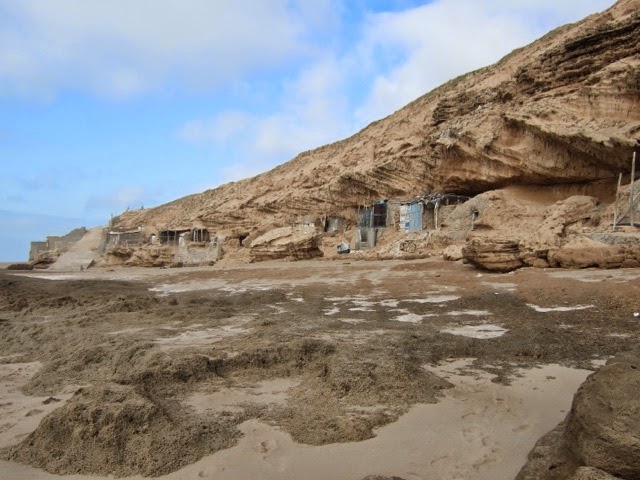We spent much of the day in the Sous Massa National Park with a naturalist guide named Said who is an enthusiastic birder but also knows the flora and fauna well. We got all sorts of questions answered about plant species, and agricultural and Berber practices.
The park was established about 25 years ago in an effort to preserve wetlands for migrating birds, habitat protection for an endangered species (the Bald Isis), and control of desertification. We saw lots of egrets, herons, gulls, different kinds of ducks, sparrows, swallows, finches, owls, a juvenile flamingo, and many other birds. We didn't see the Bald Isis! Not being birders this was all very interesting but we didn't have a list that we were checking off.
The park straddles the Wadi Massa, a vast estuary with shifting sand bars.
People are allowed to farm using traditional ways, but not allowed to build houses next to the cliffs (although we saw some "secret" houses) due to occasional flash floods and high water. This wadi last flooded in October and there are still plots of land under water as well as many ponds for the birds. People were harvesting reeds (used for baskets, furniture, ceilings, amongst other uses) and alfalfa for animal feed. We saw many protesting, overloaded donkeys, as well as overloaded baskets on the back of motorcycles or trucks.
Above the river are many villages--this mosque is particularly imposing.
We finished our walk along a wide and beautiful sandy beach that is usually filled with European tourists in the spring and fall.
There were some curious structures built into the cliffs, and incorporating caves...they are fishermen's huts, and might have been in each family for years.
We drove back to Taroudannt via some back country roads and went across yet another wadi showing the power of water when it comes down in a torrent as it did a few months ago.










No comments:
Post a Comment